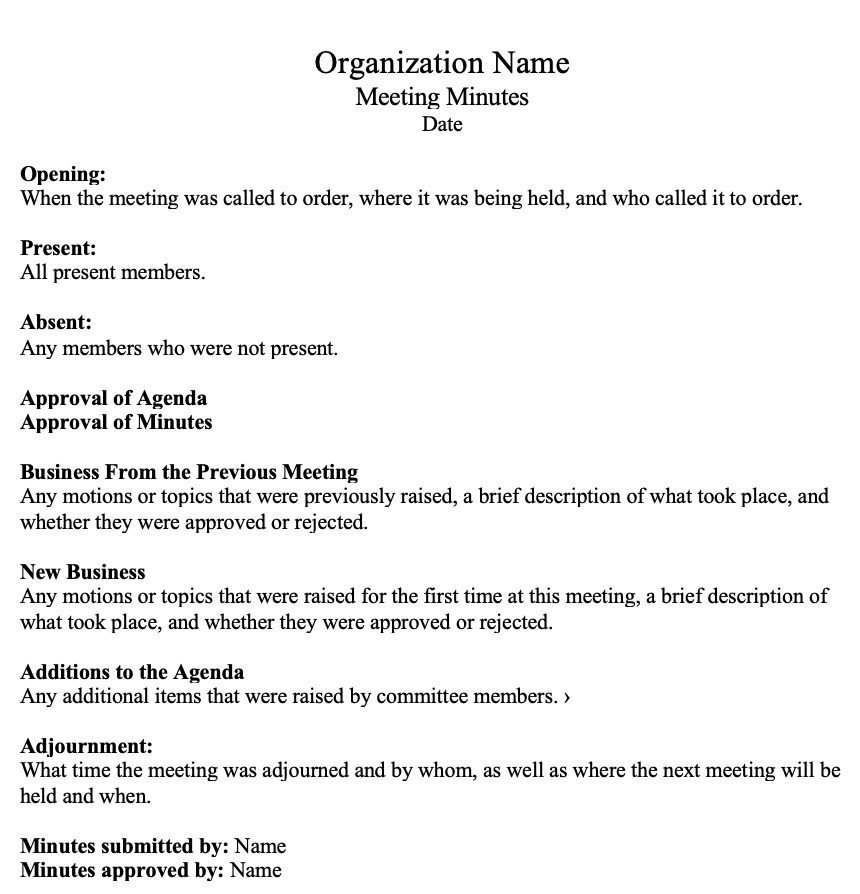In effective business communication, meeting minutes play a crucial role in documenting and summarizing the discussions, decisions, and actions taken during a meeting. Well-structured meeting minutes serve as a valuable resource for attendees and stakeholders. In this article, we will delve into the key components typically included in meeting minutes and provide some insights into their importance.
Introduction
Meeting minutes, also known as meeting notes or minutes of the meeting, are an official record of what transpired during a meeting. They serve as a historical document and a reference point for future discussions and actions. Here are the essential components that should be present in well-prepared meeting minutes:
1. Meeting Details
- Date and Time: The date and time when the meeting took place.
- Location: The physical or virtual location of the meeting.
- Attendees: A list of participants, including their names and roles.
2. Agenda
- Agenda Items: A list of topics or agenda items discussed during the meeting.
3. Meeting Minutes Examples
For a better understanding of how meeting minutes are structured, you can refer to some meeting minutes examples.

4. Decisions and Action Items
- Decisions Made: Any resolutions, conclusions, or decisions reached during the meeting.
- Action Items: Specific tasks assigned to individuals or teams, along with deadlines for completion.
5. Discussions
- Key Points Discussed: A summary of the main points discussed for each agenda item.
- Questions and Clarifications: Notable questions raised and any clarifications provided.
6. Progress Updates
- Status Updates: Reports on the progress of ongoing projects or initiatives.
- Milestones Achieved: Significant milestones or achievements mentioned.
7. Next Meeting Date
- Scheduled Next Meeting: Information about the date, time, and location of the next meeting.
8. Attachments
- Additional Materials: Any supplementary documents, presentations, or reports shared during the meeting.
9. Signatures and Approval
- Chairperson's Signature: The signature of the meeting chairperson to confirm the accuracy of the minutes.
- Attendee Signatures: Signatures of attendees to acknowledge their participation and agreement with the minutes.
Conclusion
Meeting minutes are invaluable for ensuring transparency, accountability, and effective communication within an organization. They provide a clear record of what transpired, decisions made, and actions to be taken. By including these key components in your meeting minutes, you can create a comprehensive and informative document that aids in productivity and decision-making.
